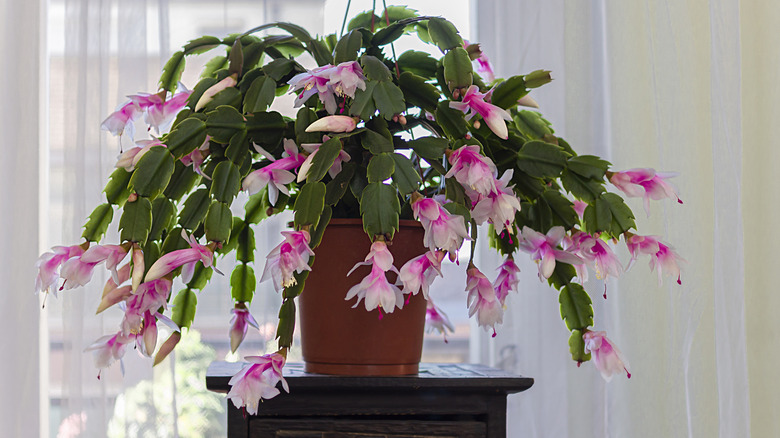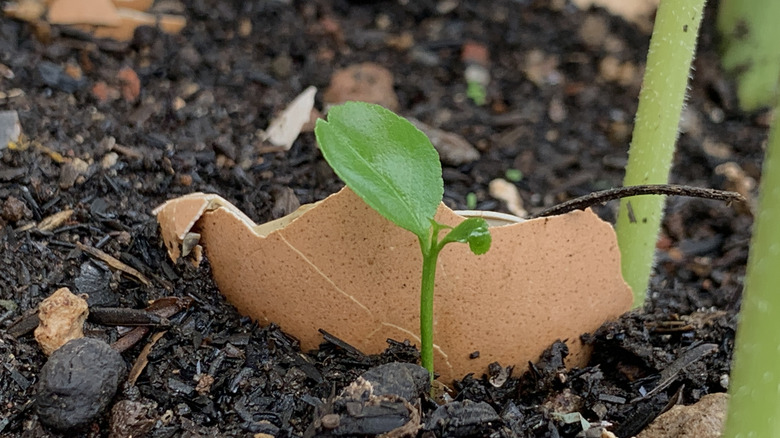Try An Easy Eggshell Hack For A Thriving Christmas Cactus
Despite its name, Christmas cactus does not only grow during the month of December. It's classified as a perennial shrub that's native to Brazil, but grows domestically within the lower 48 states of Arizona, New Mexico, Texas, and Oklahoma. In fact, given the whole Schlumbergera genus thrives within USDA growing zones 9 through 11, Christmas cactus may not be best suited to survive cold conditions associated with the holiday season. If you want to give your home-grown Christmas cactus the best shot at life, consider this hack: naturally fertilizing it with leftover eggshells from a hearty breakfast feast (or holiday baking session).
Eggshells are primarily a good source of calcium for plant life, though they decompose slowly. Recycled shells cannot prevent the kind of detrimental calcium deficiency that leads to blossom end rot, regardless of what old wives' tales you may have heard, but the mineral does help bolster cell walls and make plants more disease resistant. This hack is a sustainable option that works whether you add eggshells directly into the soil around your Christmas cactus, or create a more potent natural fertilizer by throwing them in your simple compost bin.
To make these shells decompose faster, consider drying them out first (using a warm oven works if you don't want to wait) so they can be broken into smaller chunks. Hot composting is also a good way to reduce the risk of salmonella bacteria leaching into the soil — though it's already unlikely this pathogen would have an effect.
Help your Christmas cactus thrive
Christmas cactus are worth growing for reasons beyond their beautiful flowers, which come in a variety of colors including red, rose, purple, peach, cream, and white. As succulents these plants are generally low maintenance, and they can make pollinators like hummingbirds more drawn to your yard. Before applying this fertilizing eggshell hack, you can propagate your own Christmas cactus using root or stem cuttings, ideally in more sandy soil with good drainage. New growths will start to appear in late winter or early spring, making this the best time to add your natural fertilizer (less is needed during summer), and be sure not to over-water these plants. It's best not to let a Christmas cactus soak; it should dry out completely between waterings.
As mentioned, Christmas cactus are (ironically) not very cold resistant, so they should be brought inside during seasons of heavy frost. Their leaves may also bleach or burn when exposed to direct sunlight during the summer. Even during winter months, Christmas cactus should be grown in partial shade with only about two to six hours of direct sunlight a day. Beyond this eggshell growth hack, you can also consider mixing your natural fertilizer with common household additives like coffee grounds to balance pH levels, or epsom salt to address a sulfate deficiency.

